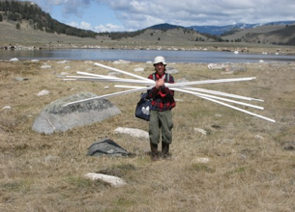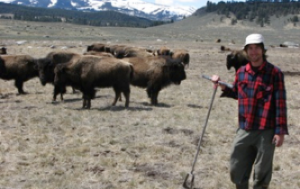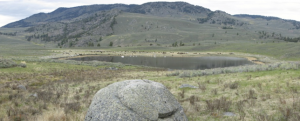Wetlands in the arid western US are sensitive to climate patterns the provide varying inputs of surface and/or ground water. The northern range of Yellowstone is covered by glacial till and many wetland basins occur within the till matrix. The basins support marshes in most areas and have had nesting populations of trumpeter swans and other birds in the recent past. However, most of these basins have much lower water levels than in the past, no nesting birds, and considerable vegetation and soil impact from grazing ungulates, particularly bison.
Graduate student Derek Schook is analyzing more than 20 basins on the northern range to characterize their hydrologic regimes, soils and vegetation, past water levels, and develop a mathematical model of ground water flow and surface water levels in the Trumpeter Lake (photo below) watershed. The goal is to understand the effect of natural climate variation vs. directional climate change on the hydrologic regime of these basins and the ecosystems they support, and to set up a long-term monitoring program for marsh basins.


